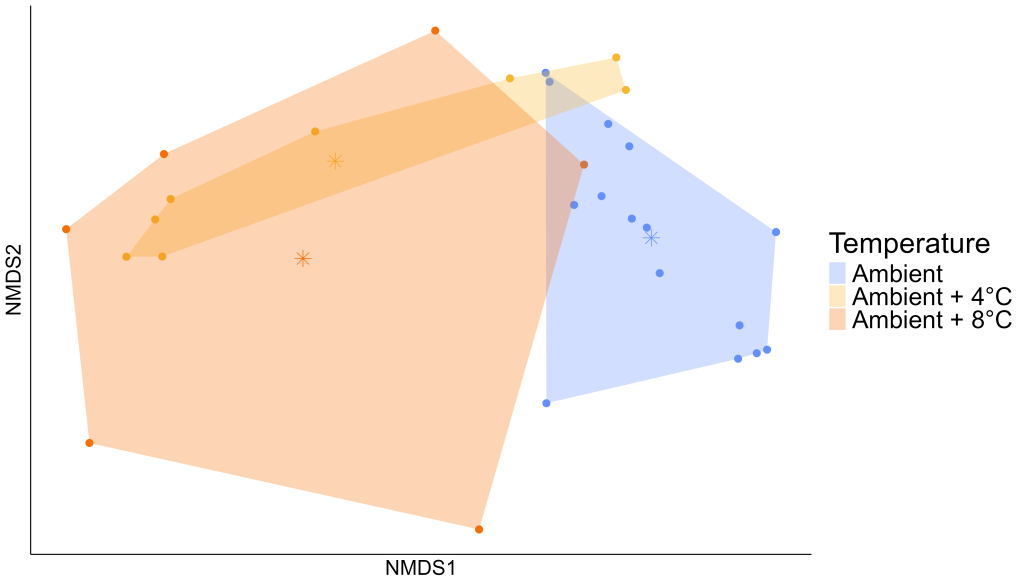During a field experiment in summer 2024, we collected samples from pollen loads made by red mason bees in nests experiencing different temperatures: ambient temperature, ambient + 4°C and ambient + 8°C. Have a look at the following pages if you want to learn more about the field experiment (here and here) and discover other findings!
The samples were then observed under a microscope, and the pollen grains were grouped by morphotypes and counted. This hard work was conducted by two students, Evelyn Owen and Milissa Slipec-Daly, who worked in the laboratory during the spring and summer. You can check this page if you want to learn more and see some cool pictures of pollen grains!
From counts of pollen morphotypes, we calculated the Bray-Curtis dissimilarity index between each sample. This index quantifies the dissimilarity of pollen composition between samples. Thanks to a specific statistical analysis (Non-metric Multidimensional Scaling, NMDS), we can visualize the dissimilarities between samples on a 2D-plot, where samples (i.e., points) closer together are more similar than those further apart.
The NMDS graph below shows that, in our experiment, samples from the “ambient” temperature treatment are grouped separately from the samples from the “ambient +4 °C” and “ambient +8 °C” temperature treatments. This means that pollen loads collected by bees for nests at ambient temperature are composed of different types of pollen than pollen loads collected by bees for nests heated at +4 °C or +8 °C, even though the bees are all foraging from the same environment.

This initial finding needs to be consolidated by analysing more samples, especially in the +4 °C and +8 °C temperature treatments. We also need to link pollen morphotypes to specific species, in order to determine which plants are visited by red mason bees when they collect pollen for larvae experiencing different temperatures.
This initial result is nevertheless interesting and promising, as it suggests that climate warming could influence the type of pollen that red mason bees collect and therefore the plants that these bees pollinate.
